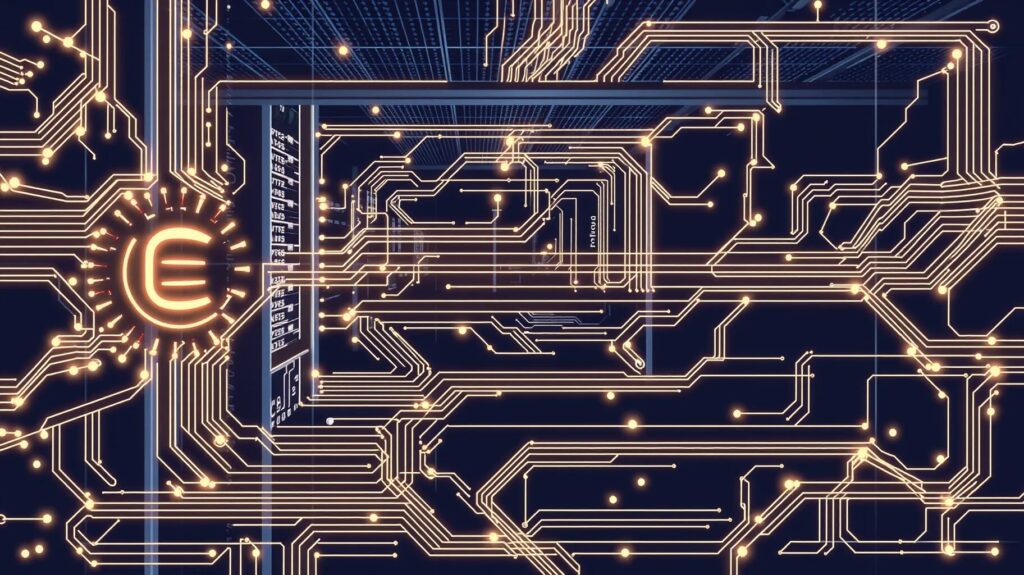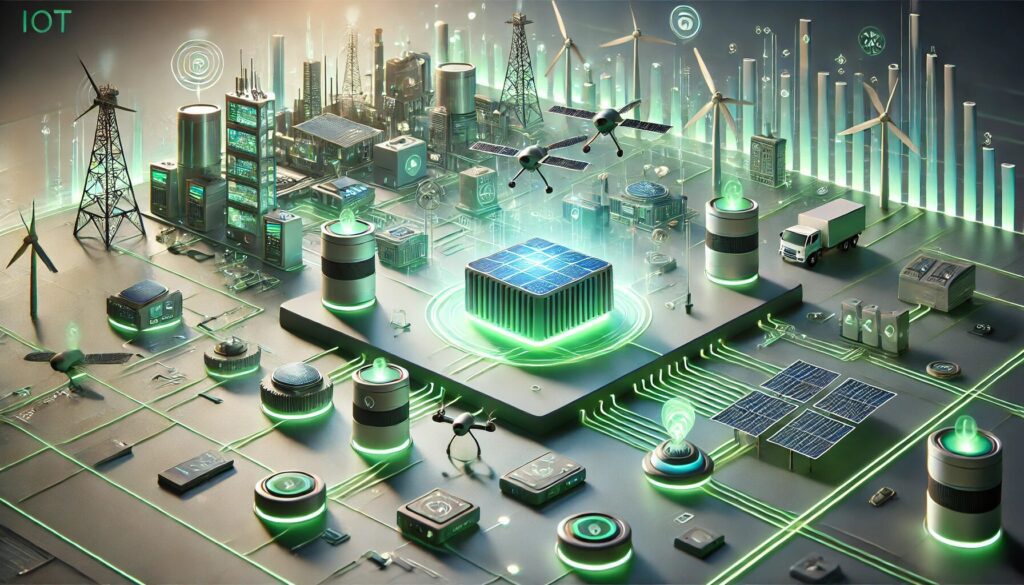
What is Edge Machine Learning and Why It Matters for IoT
In a world that thrives on connectivity, Edge Machine Learning (Edge ML) has emerged as a groundbreaking way to process data locally, on devices themselves, instead of sending everything to the cloud. For Internet of Things (IoT) devices, this isn’t just convenient—it’s essential. With the growth of smart homes, autonomous vehicles, and wearable tech, these devices need to make quick decisions based on real-time data. That’s where Edge ML shines.
But here’s the thing—many of these IoT devices run on limited power sources like batteries. This means that while Edge ML allows for faster, more responsive systems, it also poses a critical question: How do we make it energy-efficient?
The Power Struggle: Energy Consumption in IoT Devices
As IoT devices become more sophisticated, the amount of power they require escalates. Sensors, processors, and wireless communication systems all gulp down energy. And the more complex the machine learning models running on the edge, the more demanding they are on the device’s power supply.
In fact, the constant need to process data, transmit information, and interact with other systems can quickly drain a device’s battery. For devices deployed in remote locations, where replacing or charging batteries isn’t a simple task, energy efficiency becomes an urgent concern.
Without careful planning, we could end up in a situation where IoT devices are less about enabling the future and more about constantly needing maintenance.
Balancing Power and Performance: Challenges of Edge ML
Edge ML is about walking a tightrope: balancing the need for performance with power efficiency. On one hand, higher-performance ML models require more computing power, which eats into battery life. On the other hand, scaling back too much on the processing can affect the device’s ability to provide accurate and timely data.
This challenge becomes even trickier when you consider the diversity of IoT devices. From small wearable sensors to industrial robotics systems, the spectrum of power requirements is vast. Optimizing machine learning for such a wide array of devices means one-size-fits-all solutions won’t cut it.
Low-Power Hardware for Efficient Edge Computing
One approach to solving the energy consumption problem is through specialized low-power hardware designed specifically for Edge ML. Many companies are developing microcontrollers and application-specific integrated circuits (ASICs) that consume far less energy than traditional hardware.
For example, ARM’s Cortex-M processors are built to handle ML workloads at a fraction of the power required by general-purpose CPUs. Another player, NVIDIA’s Jetson Nano, offers powerful computing abilities tailored for AI applications, while being highly energy-efficient.
This shift toward dedicated hardware shows that the industry is prioritizing efficiency without sacrificing performance.
Optimizing Algorithms for Reduced Power Consumption

The hardware might be evolving, but that’s only half the battle. The other critical factor is optimizing machine learning algorithms to run efficiently on these devices. Efficient algorithms can help edge devices perform complex computations while using minimal power.
To achieve this, developers focus on minimizing the number of operations required to make decisions. Techniques like early exit strategies—where the algorithm stops once it’s confident enough in its prediction—can significantly reduce energy usage. The goal is simple: do more, but with less energy consumption.
Model Compression: Smaller, Faster, and Greener
A key strategy to reduce power consumption in edge devices is model compression. Machine learning models, especially deep neural networks, can be incredibly large and complex. This complexity directly translates into higher energy demands, as the model requires more computations to produce results. But not all of this complexity is essential for accurate predictions.
Through techniques like model distillation and parameter reduction, developers can shrink these models, making them not only faster but also more energy-efficient. Model distillation involves training a smaller model to mimic the behavior of a larger one, allowing it to achieve similar accuracy while using far less power. By compressing the size of the model, edge devices can process data more efficiently, with less energy waste.
Quantization Techniques: Less Bits, More Power Savings
Another highly effective technique for reducing power consumption in Edge ML is quantization. In its simplest form, quantization reduces the precision of the numbers used in machine learning calculations. Instead of using 32-bit floating-point numbers, a quantized model might use 8-bit integers, significantly cutting down the computational load.
The beauty of quantization is that, while you’re reducing precision, the impact on the model’s accuracy is often minimal. Many models can still make highly reliable predictions even when they’re dealing with lower-precision data. In return, the savings in energy can be substantial. Smaller data types mean fewer calculations and, ultimately, less power required.
In this way, quantization strikes a balance between accuracy and energy efficiency without significantly compromising the performance of IoT devices.
Pruning: Cutting Down the Energy Drain
Where quantization focuses on precision, pruning targets the structure of the model itself. Many machine learning models contain redundant neurons or weights—sections of the model that contribute little to the final output. By selectively removing these elements, a process known as pruning, you can reduce the size of the model without sacrificing accuracy.
Pruning works by identifying the neurons or connections that are least active or least impactful, and then trimming them away. The result? A leaner, more efficient model that demands less processing power and, consequently, less energy. This technique has been particularly valuable for convolutional neural networks (CNNs), which are often used in image and video recognition on IoT devices.
By removing unnecessary parts of the model, pruning directly contributes to longer battery life and better overall energy efficiency.
Federated Learning: Decentralized and Efficient
A major power drain for IoT devices is the need to frequently communicate with a central server to train machine learning models. Federated learning offers an elegant solution. Instead of sending data back and forth between devices and a central cloud, federated learning allows individual devices to train models locally, only sending updates to a central model as needed.
This decentralized approach significantly reduces the amount of data that needs to be transmitted, which directly lowers communication-related power consumption. Additionally, federated learning offers a privacy advantage by keeping data on the device, limiting exposure to external networks.
In terms of energy efficiency, federated learning cuts down on networking costs, which are often one of the largest sources of power consumption in IoT systems. It’s a win-win: devices consume less power and the system maintains the privacy and autonomy of the data.
Adaptive Learning Models: Dynamic Power Management

When it comes to managing power on edge devices, adaptive learning models are a game-changer. These models adjust their behavior based on the available resources, like battery life or processor power. If a device detects that its battery is running low, an adaptive model can switch to a less power-hungry mode, reducing the frequency of updates or the complexity of the operations.
This flexibility allows for more efficient use of energy, as the device can scale back on certain tasks when needed, but ramp up performance when resources are more plentiful. For instance, in a smart thermostat, the machine learning model might focus on detailed predictions during high-energy periods but use simpler calculations overnight when precise adjustments aren’t as critical.
By dynamically managing how and when resources are used, adaptive learning models help edge devices stay efficient without losing their core functionality.
The Role of Sleep Modes in Power Efficiency
One of the simplest yet most effective techniques for conserving energy in IoT devices is the use of sleep modes. Much like your smartphone dims its screen or shuts down certain apps when it’s not in use, edge devices can enter low-power modes when they’re idle. The key here is knowing when to activate these modes without disrupting the device’s performance.
For example, a smart sensor used in home automation might only need to process data when there’s significant environmental change. During periods of inactivity, the device can enter a deep sleep state, consuming minimal power while still being ready to wake up instantly when needed.
By intelligently managing when devices operate at full capacity and when they enter sleep mode, developers can drastically reduce energy consumption without affecting the device’s core functions.
Communication Overheads: Minimizing Data Transmission Costs
When it comes to IoT devices, one of the most energy-intensive activities is data transmission. Sending data back and forth, especially over wireless networks, can significantly drain battery life. The goal in energy-efficient edge ML is to minimize how often and how much data needs to be transmitted.
One strategy is edge inference—instead of constantly sending raw data to the cloud, IoT devices can process the data locally and only transmit the most critical results. For instance, in video surveillance systems, instead of transmitting every frame to a central server, the edge device can perform real-time analysis and only send relevant alerts or anomalies.
Reducing the frequency of transmissions and optimizing how data is handled can dramatically decrease communication overheads, leading to extended battery life.
Sustainable Edge ML: Looking to the Future
As the world moves towards greener technologies, sustainability in Edge ML is becoming a focal point. The growing number of IoT devices means energy consumption will continue to be a significant concern. But what if edge devices could not only use less power but also harvest energy?
Energy harvesting technologies, such as solar power, kinetic energy, and RF energy harvesting, allow devices to recharge themselves using the environment. This could revolutionize the IoT landscape, making devices almost completely self-sustaining. For example, solar-powered sensors in agriculture could monitor soil conditions indefinitely without needing battery replacements.
In the long run, a combination of energy-efficient hardware, smarter algorithms, and renewable power sources will shape the future of Edge ML and IoT.
Case Studies: Successful Implementations of Low-Power IoT Devices
Several industries are already implementing energy-efficient Edge ML with remarkable success. Take the healthcare industry, where wearable devices need to run continuously to monitor vital signs without constant recharging. Through optimized algorithms and low-power sensors, these devices can provide accurate, real-time data while using minimal energy.
Similarly, in smart cities, IoT devices such as traffic sensors and environmental monitors use adaptive power-saving techniques to operate for months or even years without maintenance. These case studies highlight how intelligent design and low-power solutions are transforming industries.
Companies like Google, ARM, and Texas Instruments have also been at the forefront of developing IoT hardware optimized for edge computing, helping to drive energy-efficient solutions across various sectors.
The Trade-Off Between Accuracy and Power Efficiency
A recurring challenge in edge ML is finding the right balance between power efficiency and accuracy. More complex models tend to be more accurate but consume more power. On the flip side, lighter models are energy-efficient but may not deliver the same level of precision, especially for complex tasks like object detection or natural language processing.
To manage this trade-off, developers often employ model scaling techniques, which allow for scaling up or down based on the device’s power availability. In some cases, accuracy can be sacrificed in non-critical operations, while energy savings take priority.
Understanding when it’s appropriate to lean toward efficiency versus accuracy depends on the application. In safety-critical environments, such as autonomous vehicles, higher accuracy is paramount, but for devices like fitness trackers, small compromises in precision can lead to significant power savings.
Best Practices for Developers: Designing for Efficiency
When it comes to creating energy-efficient Edge ML solutions, developers must follow several key practices to ensure that IoT devices can operate effectively without draining their power supply. It all starts with hardware-software co-design—ensuring that the hardware chosen for the device is perfectly suited for the machine learning models it will run. This means using low-power processors, such as microcontrollers optimized for AI workloads, which provide enough computational power without overconsuming energy.
Next, developers should focus on data management. Reducing the amount of data that needs to be processed or transmitted by implementing local processing and compression techniques can go a long way. Keeping data local as much as possible and using edge inference minimizes the need for constant communication with the cloud, which can be a major power drain.
Another vital practice is to always design adaptive algorithms that can dynamically adjust their complexity based on available resources. For example, these models can run at full power when the battery is fresh, but scale down when battery life is low. This is particularly useful for wearable devices or remote sensors, where energy conservation is critical.
Lastly, understanding the trade-offs between accuracy and efficiency is essential. Developers should determine which applications require higher precision, and when a less power-hungry model will suffice. Implementing features like pruning or quantization helps reduce the workload, ultimately saving energy while maintaining satisfactory performance levels.
By following these best practices, developers can create robust, energy-efficient solutions that push the boundaries of what IoT devices can do, all while conserving the energy they rely on to function.
Conclusion
As the demand for IoT devices grows, the need for energy-efficient Edge Machine Learning becomes more urgent. By carefully optimizing both hardware and software, developers can strike a balance between performance and power consumption, ensuring that devices operate smoothly without draining their limited energy resources. Techniques like model compression, pruning, and quantization help streamline machine learning models, while low-power hardware and intelligent power management systems extend battery life.
Looking ahead, innovations like federated learning and adaptive algorithms promise to further reduce power consumption, while sustainable energy sources may soon make IoT devices nearly self-sufficient. By prioritizing efficiency at every stage—from hardware design to model implementation—developers can contribute to a future where smart devices are not only powerful but also environmentally conscious.
Resources
- ARM Cortex-M Processors for Edge ML
www.arm.com
A comprehensive guide to low-power processors optimized for IoT and Edge ML applications. - NVIDIA Jetson Nano
developer.nvidia.com/embedded/jetson-nano
Learn more about the Jetson Nano, a powerful yet energy-efficient computing platform for AI at the edge. - Google AI: Federated Learning
ai.googleblog.com
An introduction to federated learning and its benefits for privacy and energy efficiency. - Quantization in Deep Learning
arxiv.org
Research paper on quantization techniques and their impact on model performance and power savings. - Model Pruning for Efficient ML
paperswithcode.com
Explore different pruning methods to reduce the size and complexity of machine learning models. - Texas Instruments IoT and Edge Computing Solutions
www.ti.com
A range of low-power hardware solutions for edge AI and IoT applications. - Edge Impulse: ML for IoT Devices
www.edgeimpulse.com
Tools and resources for developing machine learning models optimized for edge devices. - Energy Harvesting in IoT
ieee.org
An article discussing energy harvesting techniques to improve sustainability in IoT systems. - EfficientNet: Scaling Models Efficiently
arxiv.org
Research on how to build machine learning models that scale efficiently in terms of both accuracy and energy use. - TinyML: The Next AI Frontier
tinyml.org
Explore the world of TinyML, where energy-efficient machine learning is applied to ultra-low-power devices.